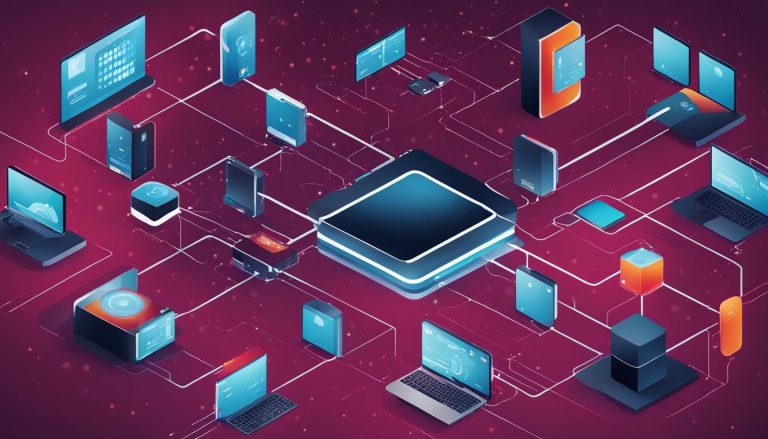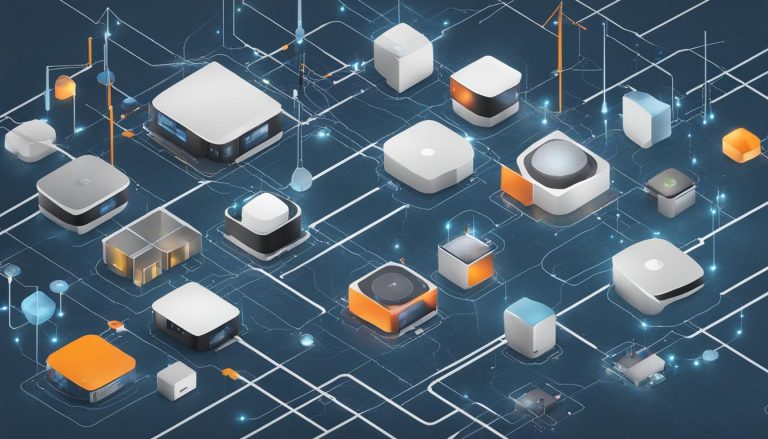A pull request is a fundamental concept in software development and version control systems like GitHub. It allows developers to propose changes to a codebase. When a developer wants to contribute to a repository, they create a pull request to notify the repository owners of their proposed changes. The pull request contains the modified code and a description of what the changes aim to accomplish. Repository owners can review the changes, leave comments, and collaborate with the developer before merging the code into the main branch.
Key Takeaways:
- A pull request is a way for developers to propose changes to a codebase.
- It allows for collaboration and review before merging the code into the main branch.
- Repository owners can provide feedback and suggestions to improve the changes.
- Pull requests are an essential part of the software development workflow.
- They help ensure code quality and maintain consistency in the codebase.
The Pull Request Process and Workflow
Creating a pull request is a straightforward process that involves a series of steps to propose changes to a codebase. To get started, follow these guidelines to ensure an efficient and collaborative pull request workflow.
Step 1: Fork the Repository
The first step is to fork the repository you want to contribute to. By forking the repository, you create a copy of it under your own GitHub account. This allows you to freely make changes without affecting the original codebase.
Step 2: Create a New Branch
Once you have forked the repository, create a new branch for your proposed changes. It’s good practice to name the branch descriptively, such as “feature/add-new-functionality”. This helps other developers understand the purpose of your changes.
Step 3: Make Your Changes
Now it’s time to make the desired modifications to the codebase. Ensure that your changes follow the coding style and guidelines of the project. While making the changes, it’s useful to frequently commit and push your code to your branch to keep track of progress.
Step 4: Submit the Pull Request
Once you are satisfied with your changes, submit a pull request. In the pull request, provide a clear and concise description of what your changes aim to accomplish. It’s helpful to include relevant details, such as any issues or feature requests that your changes address.
By following these steps, you can navigate the pull request process smoothly and contribute to open-source projects or collaborate with team members effectively. Remember to be responsive to feedback and engage in constructive discussions to ensure the success of your pull requests.
Importance of Code Review in Pull Requests
Code review plays a crucial role in the pull request process. It allows for quality control, collaboration, and knowledge sharing among developers. By reviewing each other’s code, developers can catch potential bugs, improve code readability, maintain consistency, and ensure adherence to coding standards. Code review also helps spread knowledge and best practices within the development team, fostering a culture of continuous learning and improvement.
One of the key benefits of code review in pull requests is the ability to catch potential bugs or flaws in the code. By having multiple sets of eyes reviewing the code, developers can identify and address issues that may have been missed during the initial development phase. This helps improve the overall quality and reliability of the codebase.
Code review also plays a vital role in code readability and maintainability. By reviewing code during the pull request process, developers can ensure that the code is clean, well-structured, and follows established coding conventions. This makes it easier for other developers to understand and work with the code in the future, improving collaboration and reducing the time required for maintenance and bug fixes.
Best Practices for Code Review in Pull Requests
- Provide constructive feedback: When reviewing code, it is important to provide feedback in a constructive manner. Focus on the issues at hand and suggest specific improvements or alternatives. Avoid personal attacks or unhelpful criticism.
- Address concerns thoroughly: If you have concerns or questions about the code, make sure to raise them during the review process. Discuss the potential impacts and propose solutions or alternative approaches.
- Maintain a respectful and collaborative environment: Code review should be a collaborative process where developers can share their knowledge and expertise. Foster a respectful and inclusive environment where everyone feels comfortable and valued.
By following these best practices, developers can ensure that code review in pull requests is effective and contributes to the overall quality and success of the software development process.
Table: Benefits of Code Review in Pull Requests
| Benefits | Explanation |
|---|---|
| Improved code quality | Code review helps identify and address potential bugs and issues, leading to higher-quality code. |
| Enhanced collaboration | Code review fosters collaboration among developers, allowing for knowledge sharing and learning from each other. |
| Code readability and maintainability | Reviewing code ensures that it is well-structured and follows coding conventions, making it easier to understand and maintain. |
| Standard adherence | Code review helps ensure that the code adheres to established coding standards and best practices. |
| Bug prevention | By catching potential bugs early through code review, developers can prevent them from reaching the production environment. |
Tools and Features for Pull Requests in Version Control Systems
Version control systems, such as GitHub, offer a range of tools and features that streamline the pull request process and enhance collaboration among developers. These tools are designed to facilitate code review, improve communication, and ensure the smooth integration of proposed changes into the main codebase.
Code Review Tools
One of the essential functions of a pull request is code review. Version control systems provide built-in tools for reviewing and commenting on code changes. These tools allow developers to leave specific comments on individual lines of code, suggesting improvements, addressing concerns, or providing feedback. Code review tools not only help identify bugs and improve code quality but also enable developers to learn from each other and share knowledge.
Integration with Issue Tracking Systems
In many software development projects, issues and bugs are tracked using dedicated systems like Jira or Trello. Integrating these issue tracking systems with the pull request workflow can help streamline the development process. Developers can reference specific issues or tasks in their pull requests, making it easier for reviewers to understand the context and purpose of the proposed changes. This integration ensures that the development work aligns with the project’s overall goals and priorities.
Automated Testing and Continuous Integration
Version control systems often provide integrations with popular continuous integration (CI) tools, allowing for automated testing of the proposed changes. CI tools can automatically run tests against the modified code to ensure that it meets the project’s quality standards and does not introduce any regressions or breaking changes. The feedback from automated tests can help developers identify and fix issues early in the development process, reducing the risk of introducing bugs into the main codebase.
Access Control and Permissions
Version control systems offer advanced access control and permission settings to ensure that only authorized individuals can contribute to the codebase or approve and merge pull requests. These settings allow repository owners to define granular permissions for different team members, ensuring that only trusted developers can make changes or review and merge pull requests. Access control and permissions help maintain codebase integrity and prevent unauthorized modifications.
“Version control systems provide a range of tools and features that streamline the pull request process and enhance collaboration among developers.”
These are just a few examples of the tools and features available in version control systems to support the pull request workflow. By leveraging these tools effectively, development teams can ensure smooth and efficient collaboration, improve code quality, and facilitate the integration of new features and bug fixes into the main codebase.
Best Practices for Creating Effective Pull Requests
In order to ensure that your pull requests are effective and contribute to a smooth collaborative process, it is important to follow some best practices. These practices will help you communicate your changes clearly, address any concerns, and maintain a productive working relationship with other developers.
Clear and Concise Descriptions
When creating a pull request, it is crucial to provide a clear and concise description of the changes you have made and the problem they aim to solve. This helps other developers understand the purpose of your changes and allows for more effective collaboration. Avoid lengthy descriptions or technical jargon that may confuse or overwhelm reviewers. Instead, focus on providing a high-level overview and any relevant details that will help others assess the impact of your changes.
Atomic and Well-Scoped Changes
It is generally recommended to make atomic and well-scoped changes in your pull requests. Atomic changes refer to breaking down your modifications into smaller, manageable units that can be easily reviewed and understood. This allows reviewers to provide focused feedback and reduces the likelihood of introducing unintended consequences. Additionally, well-scoped changes mean that each pull request addresses a specific problem or feature, rather than bundling unrelated modifications together. This makes it easier for reviewers to assess the impact of your changes and reduces the risk of conflicts with other pull requests.
Responding to Feedback
When reviewers provide feedback or raise concerns during the pull request process, it is important to acknowledge and address their comments in a timely manner. Take the time to understand their perspective and provide clarifications or updates to your code as needed. Remember to maintain a constructive and respectful tone during these discussions, fostering a collaborative environment that encourages open dialogue. By actively engaging with feedback, you can improve the quality of your code and enhance the overall effectiveness of the pull request.
| Best Practices for Creating Effective Pull Requests |
|---|
| Provide clear and concise descriptions of your changes |
| Make atomic and well-scoped changes |
| Respond to feedback in a timely and constructive manner |
Collaboration and Communication in Pull Requests
Pull requests are not only a technical process but also a collaborative and communicative one. They provide an opportunity for developers to work together, share knowledge, and address concerns in a respectful and constructive manner. Effective collaboration and communication in pull requests are essential for successful code review and merging processes.
One way to foster collaboration in pull requests is by encouraging open communication between developers. This can be achieved by providing clear and detailed descriptions of proposed changes, explaining the rationale behind them, and addressing any potential questions or concerns upfront. By doing so, developers can ensure that everyone is on the same page and minimize misunderstandings or conflicts during the review process.
Additionally, developers should actively engage in discussions within the pull request. This includes responding to comments and feedback provided by other team members, offering clarifications, and seeking further input when needed. By participating in these discussions, developers can refine their code, incorporate valuable insights from others, and improve the overall quality of the changes being proposed.
Creating a Collaborative Environment
In order to maintain a collaborative environment, it is important to foster a culture of respect and constructive feedback. Developers should approach code review with the mindset of continuous learning and improvement, recognizing that the goal is not to criticize but to enhance the codebase. Constructive feedback should be provided in a respectful manner, focusing on the code itself rather than attacking the developer personally. This helps create a safe and supportive space where everyone feels comfortable sharing their ideas and opinions.
Furthermore, it is crucial to address any concerns or conflicts that arise during the review process promptly. This may involve engaging in further discussions, seeking clarification, or finding compromises when necessary. By actively resolving conflicts and addressing concerns, developers can ensure that the pull request process moves forward smoothly and efficiently. Ultimately, the goal is to reach a consensus and merge the changes into the main codebase while upholding the quality and integrity of the project.
Benefits and Impacts of Effective Pull Requests in Software Development
Pull requests bring numerous benefits to the software development process and have a significant impact on the overall quality and collaboration within a development team. By facilitating code review and collaboration, pull requests contribute to improved code quality, reduced bugs, and a more efficient development process.
One of the key benefits of pull requests is that they provide an opportunity for thorough code review. By having multiple sets of eyes on the code, developers can catch potential bugs, identify areas for improvement, and ensure adherence to best practices and coding standards. This helps maintain a high level of code quality and reduces the likelihood of introducing errors into the codebase.
Furthermore, pull requests foster collaboration and knowledge sharing among developers. Through the review process, developers can provide feedback, suggestions, and alternative solutions, leading to improved code readability, consistency, and maintainability. This collaborative environment encourages continuous learning and growth within the development team.
| Benefits of Pull Requests: | Impact in Software Development: |
|---|---|
| Improves code quality | Reduces bugs and errors |
| Facilitates code review | Maintains coding standards |
| Encourages collaboration | Shares knowledge and best practices |
| Enhances code readability | Improves maintainability |
Effective pull requests have a profound impact on software development. They promote a culture of collaboration, where developers work together to create the best possible codebase. By leveraging the power of pull requests, development teams can ensure a high level of code quality, reduce the number of bugs and errors, and foster continuous improvement and growth. Through effective communication and collaboration, pull requests bring teams closer together, leading to a more efficient and successful software development process.
Conclusion
Pull requests are a fundamental aspect of software development, enabling collaboration, code review, and knowledge sharing among developers. They have become a standard workflow in modern software development, playing a vital role in maintaining codebase integrity and fostering a culture of continuous improvement and collaboration.
By following best practices and utilizing the tools and features provided by version control systems like GitHub, developers can create effective pull requests. This leads to improved code quality, reduced bugs, and a more efficient development process.
Incorporating code review in pull requests allows for quality control, collaboration, and the dissemination of knowledge within the development team. It helps catch potential bugs, improve code readability, and maintain coding standards. Code review also fosters a culture of continuous learning and improvement.
Overall, the pull request workflow enhances the development process, facilitating effective collaboration, communication, and the delivery of high-quality software. It empowers developers to propose changes, share knowledge, address concerns, and contribute to the collective growth of the development team.
FAQ
What is a pull request?
A pull request is a way for developers to propose changes to a codebase and notify the repository owners of their proposed changes.
How does the pull request process work?
When a developer wants to contribute to a repository, they create a pull request containing their modified code and a description of the changes. Repository owners then review the changes, leave comments, and collaborate with the developer before merging the code into the main branch.
What is the role of code review in pull requests?
Code review is crucial in pull requests as it allows for quality control, collaboration, and knowledge sharing among developers. It helps catch bugs, improve code readability, ensure consistency, and promote adherence to coding standards.
What tools and features are available for pull requests in version control systems?
Version control systems like GitHub provide various tools and features such as inline commenting, automated testing, and integration with project management tools to facilitate the pull request process.
What are the best practices for creating effective pull requests?
Best practices include providing constructive feedback, addressing concerns thoroughly, maintaining a respectful and collaborative environment, and following coding standards.
How does collaboration and communication work in pull requests?
Pull requests encourage collaboration and communication among developers by providing a platform for discussing proposed changes, sharing knowledge, and addressing concerns.
What are the benefits and impacts of effective pull requests in software development?
Effective pull requests lead to improved code quality, reduced bugs, and a more efficient and collaborative development process. They also foster a culture of continuous improvement and knowledge sharing within the development team.
Janina is a senior specialist in information technology


